-
Posts
12440 -
Joined
-
Last visited
-
Days Won
554
Content Type
Profiles
Forums
Events
Everything posted by Fiery
-
Fraps is still supported.
-
You can enable logging to a .ADO file (which is a plain text output file) if you alter your command-line like this: \\IP\Aida\aida64.exe /r \\IP\AidaReports\$HOSTNAME /database /sum Of course you need to create a new network share (\\IP\AidaReports), and provide your network users write-only access to the folder. BTW, do you have MySQL Connector/ODBC installed on your client stations?
-
Thank you, your monitor will be added to the next AIDA64 beta release due next week. Regards, Fiery
-
Thank you for the feedback
-

Asus Rapmage IV Extreme (Chasis FAN Monitoring)
Fiery replied to zoomer-fodder's topic in Bug reports
1) Do you have Asus AI Suite installed? If yes, then did you rename any of the fans in AI Suite? 2) Do you have the option Asus ATKEX sensor support enabled in AIDA64 / main menu / File / Preferences / Stability? -
Please try to upgrade to the latest AIDA64 Extreme beta release: http://www.aida64.com/downloads/aida64extremebuild2808b9s8mvtkpqzip After upgrading to this new version, make sure to restart Windows to finalize the upgrade. Let me know if it helps.
-

Temp Sensors Occasionally Show 123 degrees celcius (ASRock X79 Extreme11)
Fiery replied to cpachris's topic in Bug reports
Please upgrade to the latest beta version of AIDA64 Extreme available at: http://www.aida64.com/downloads/aida64extremebuild2808b9s8mvtkpqzip After upgrading to this new version, make sure to restart Windows to finalize the upgrade. Let me know if it helps. If not, then please right-click on the bottom status bar of AIDA64 main window --> Sensor Debug --> ISA Sensor Dump. Copy-paste the full results into this topic. -

Application Crash when any version after 4.00 2760 beta is installed
Fiery replied to pbcopter's topic in Bug reports
Please upgrade to the latest beta version of AIDA64 Extreme available at: http://www.aida64.com/downloads/aida64extremebuild2808b9s8mvtkpqzip After upgrading to this new version, make sure to restart Windows to finalize the upgrade. Let me know if it makes a difference. -
Thank you. It means your video adapter uses an UEFI BIOS, you use an UEFI boot, and the system BIOS/firmware doesn't emulate the classic video BIOS region (the C000 segment). In such cases AIDA64 will not be able to detect the video BIOS date using its classic method, so it will not show any video BIOS date on the Motherboard / BIOS and Computer / Overclock pages. Then you will have to go to the Display / GPU page to check the video BIOS date for your video card(s).
-
Please right-click on the Overclock page in the left page menu --> Quick Report --> Plain text. Scroll down to the end of the report, and copy-paste the section called "Debug - Video BIOS" into this topic. DMI means motherboard model is extracted from the DMI block. You can see the full DMI information on the Computer / DMI page.
-

Application Crash when any version after 4.00 2760 beta is installed
Fiery replied to pbcopter's topic in Bug reports
The card reader issue may be caused by a firmware glitch in your card reader. You can try disabling the two RAID-related options in AIDA64 / main menu / File / Preferences / Stability, that should fix that issue. Make sure to restart Windows after altering that option. -
You need to disable ULPS to make AIDA64 recognize and handle both your GPUs properly. You can disable ULPS by scanning the Registry (using e.g. REGEDIT.EXE) for all occurences of EnableUlps, and set all values of that to zero (0). Please note that you need to restart Windows after disabling ULPS, and you need to do that procedure after every Catalyst upgrades.
-

aida64 extreme edition osd update frequency not working
Fiery replied to a topic in General Discussion
The values are shown and configured in milliseconds since AIDA64 v4.20. One second equals to 1000 milliseconds. Regards, Fiery -
Shifting only one pixel would make the graph look quite odd. We've done test runs with it, and the best visual feedback is by using 2-pixel step rate.
-
Have you tried to run AIDA64 v4.20 after a Windows reboot?
-
We've done some test runs, and the only way we've found to reproduce the issue is removing the AIDA_BENCH32.DLL and AIDA_BENCH64.DLL files from AIDA64 installation folder. Please verify if you've got those files there. If any of them is missing or looks corrupted (e.g. too small file size, they both should be over 2 MBytes in size), then please try to reinstall AIDA64 v4.00.2800.
-

Application Crash when any version after 4.00 2760 beta is installed
Fiery replied to pbcopter's topic in Bug reports
1) What motherboard, CPU and video card do you have? 2) Are you running Windows 7 SP1 64-bit? 3) Have you tried to restart Windows after the last upgrade of AIDA64? Thanks, Fiery -
The new AIDA64 release introduces a completely rewritten multi-threaded memory stress testing facility with SSE2, AVX, AVX2 and FMA acceleration, implements optimized 64-bit benchmarks for Intel "Haswell Refresh", "Bay Trail", "Avoton" and "Rangeley" processors, and provides Mantle API diagnostics for the latest AMD Radeon graphics accelerators. New features & improvements AMD Mantle graphics accelerator diagnostics Multi-threaded memory stress test with SSE, SSE2, AVX, AVX2, FMA, BMI and BMI2 acceleration Optimized 64-bit benchmarks for AMD "Mullins" and "Beema" APUs Optimized 64-bit benchmarks for Intel Atom C2000 "Avoton" and "Rangeley" SoC Optimized 64-bit benchmarks for Intel "Bay Trail" desktop, mobile and tablet SoC Full support for the upcoming Intel "Haswell Refresh" platform with Intel "Wildcat Point" PCH Improved support for Intel "Broadwell" CPU Preliminary support for Intel "Royston" SoC OCZ Vertex 460 SSD support GPU details for AMD Radeon R5, R7, R9 Series GPU details for nVIDIA GeForce GTX Titan Black, GeForce GTX 750 Ti What's new since AIDA64 v3.00 OpenCL GPGPU Benchmark Suite Microsoft Windows 8.1 RTM and Windows Server 2012 R2 RTM support Multi-threaded cache and memory bandwidth benchmarks with AVX2, AVX and SSE optimizations Block-random cache and memory latency benchmark Support for up to 128 logical processors and 2 processor groups Optimized 64-bit benchmarks for AMD “Kabiniâ€, “Temashâ€, “Kaveriâ€, “Bald Eagle†APUs Optimized 64-bit benchmarks for Intel Core i7 "Ivy Bridge-E" CPU Razer SwitchBlade LCD support SensorPanel area graphs and histograms HTML report menu, revamped MHTML report format Socket FM2+ and LGA-1150 motherboards support Preliminary support for Intel Quark X1000 "Clanton" SoC DirectX 11.2, OpenGL 4.4, APP SDK 2.8.1, OpenCL 1.2 SPIR, OpenCL 2.0 support Support for Bochs PC Emulator 2.6.2, VirtualBox v4.3, VMware Workstation v10 Crucial M500, Intel 525, Intel 530, Samsung 840 Evo, OCZ Vector 150, OCZ Vertex 450, Samsung XP941 SSD support GPU details for AMD Radeon HD 7990 "Malta" and nVIDIA GeForce 700 Series [ Press Release (English) ] [ What's new in AIDA64 v4.20 ] [ Download ]
-

Temp Sensors Occasionally Show 123 degrees celcius (ASRock X79 Extreme11)
Fiery replied to cpachris's topic in Bug reports
Can you please try to uninstall the mentioned ASRock software and see if it makes a difference? That software may have a background process or service that is still running, even when you opted for the application to not be auto-launched at Windows bootup. Also, make sure to use the latest AIDA64 Extreme beta release available at: http://www.aida64.com/downloads/aida64extremebuild2770x1wr9gzpktzip After upgrading to this new version, make sure to restart Windows to finalize the upgrade. -
Turbo can make a big difference in operating temperatures. As for G42 vs N56JR, unfortunately Haswell is this kind of a beast, and you cannot really do anything about its behavior and properties. It can run at very low clocks consuming almost no power, so that's good for overall mobile application -- but under heavy load it unfortunately runs hot, that's the drawback.
-
You can untick (disable) the network traffic related items in AIDA64 / main menu / File / Preferences / Hardware Monitoring / External Applications.

